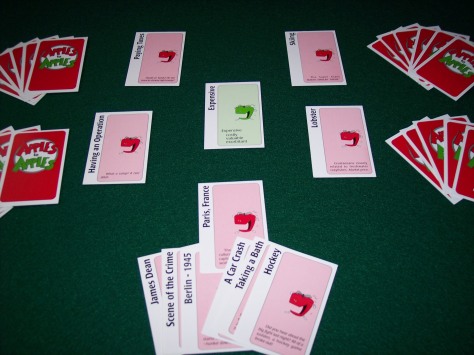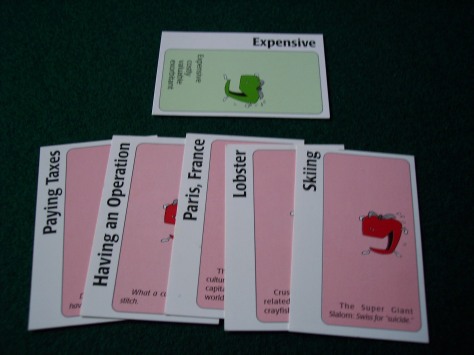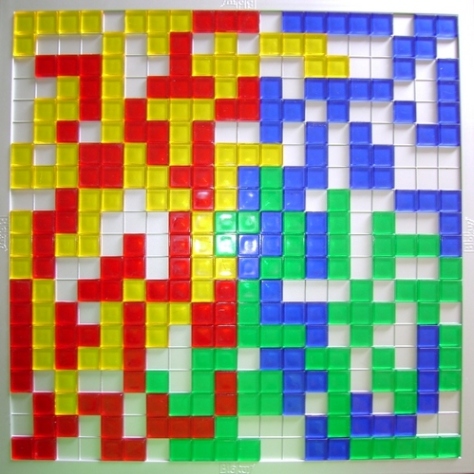Who hasn’t played this game at one time or another, without the help of actual cards, or a board? My brothers and I, and now my wife and I, routinely try to stump each other with lyrical trivia. Any music lover would like Encore (Endless Games, 1989). This is the kind of party game that nobody really wants to start playing – who wants to show off their own tone-deafness, after all? – but ends up getting everybody gathered around, laughing, and contributing a song or two from their own repertoire.
The game very simply requires each team to identify and sing lyrics from a song, at least six words in length, that include one target word that is drawn randomly from the deck. Teams alternate on the same word until one team fails to come up with an original answer, at which point the other team wins the right to move closer to the end.
There is a newer version of Encore out (first picture), but we played the older version (pic number 2), and because the old tunes are still around, it was still full of relevant words. Unfortunately, I can’t offer an opinion on the cards available in the current edition – but I honestly have no doubt the target words are a decent sample of easy, difficult, and in between. In addition to the word cards, the game comes with a board, a die, pawns, and a marker.
The target cards are shown below – each listing five everyday words. On one team’s turn, the die is rolled and their pawn moved; the color of the space they land on refers to the colored word on the card they must play. That team them must come up with a song including that word, and sing at least six lyrics that include it. Once they do, the other team must come up with a different song. Turns alternate until one team appears stuck. At that point the other team can impose a time limit (20 second sand timer), but if that first team comes up with a song, the other team then has a time limit as well. Once a team fails to come up with an appropriate answer, they lose control of the dice.
The yellow spaces on the board correspond to “category” questions, and are self explanatory. Otherwise there is nothing special about the color categories on the cards.
Encore is billed as a game for music lovers, but it really is a democratic game, with musical elements for the whole family. As bad as people might consider their singing to be, once among friends all bets are off, inhibitions are cast aside, and it’s all about laughing and enjoying the company.
This is an easy game to recommend to just about any group. The fact that players are matching their own repertoires against the word in question makes it appropriate for any age group (over 8, that is) and any English-speaking country. It is definitely a nice family game, because it can bring people together across generational lines.





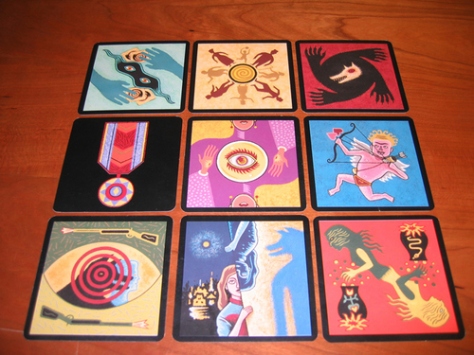



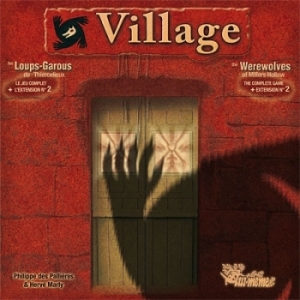

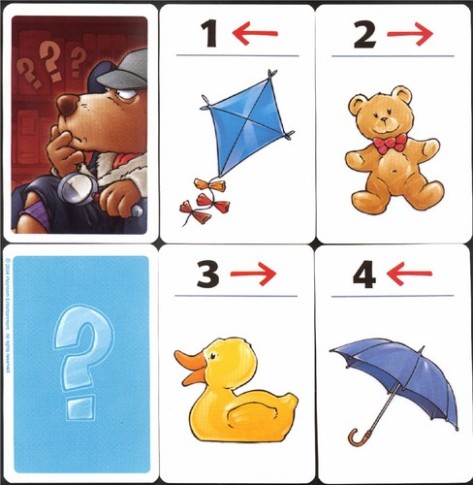




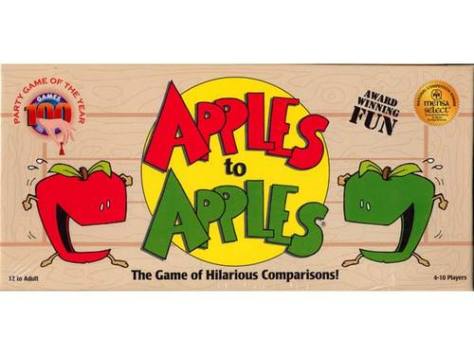 Once a decade a game strikes just the right chord with the public and flies off the shelves. Apples to Apples (Out of the Box, 1999) is such a game. This game has been played and enjoyed by so many people, and their friends, and friends of those friends, and so on, that people all over the world who “don’t play games” have loved it. It defied all odds and sold a million copies in the US without ever having been on the shelf of WalMart (as of that point in time).
Once a decade a game strikes just the right chord with the public and flies off the shelves. Apples to Apples (Out of the Box, 1999) is such a game. This game has been played and enjoyed by so many people, and their friends, and friends of those friends, and so on, that people all over the world who “don’t play games” have loved it. It defied all odds and sold a million copies in the US without ever having been on the shelf of WalMart (as of that point in time).